How many lions does it take to kill a buck Mule Deer?
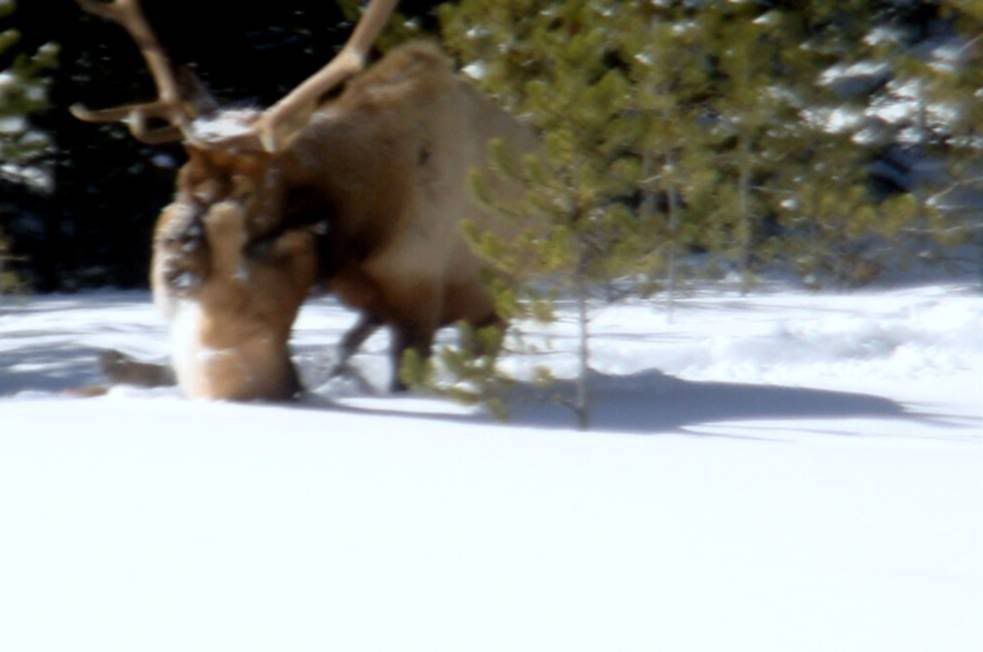
The Photographer frightened the lion away and saved and Elk
How many lions does it take to kill a buck Mule Deer?

The Photographer frightened the lion away and saved and Elk
This would fill your freezer as well.
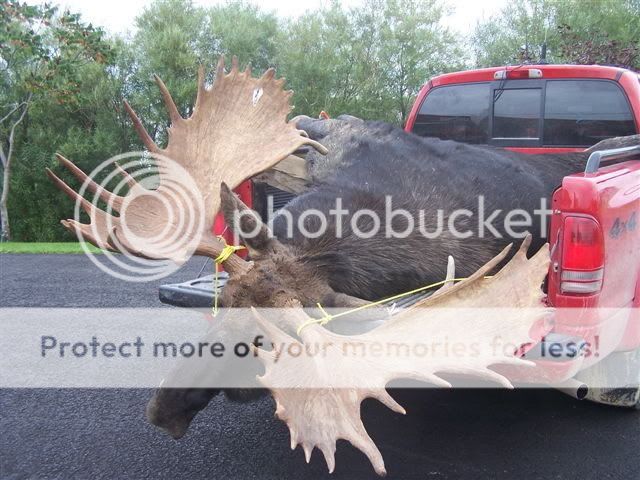
How many wolves does it take to kill a Mule Deer?


“Wyoming’s Wolf Plan Offers ‘Adequate Regulatory Mechanism’ to Manage Wolves, Feds Say”
———————————————
CHEYENNE, Wyo. Dec. 14 –The U.S. Fish and Wildlife Service (Service) has approved Wyoming’s Gray Wolf Management Plan, calling it an “adequate regulatory mechanism” that meets the requirements of the Endangered Species Act.
Formal notification of the approval came in a letter yesterday from Service Director Dale Hall to Wyoming Game and Fish Department Director Terry Cleveland.
In the letter, Hall wrote, “After careful review and consideration, we determined that the 2007 Plan will provide adequate regulatory mechanisms for conserving a recovered wolf population in Wyoming after delisting and meets the requirements of the Endangered Species Act.”
 “The Fish and Wildlife Service’s acceptance of Wyoming’s wolf plan is an encouraging sign that wolves in our state will soon be removed from the Endangered Species List, and that Wyoming will be able to manage wolves on its own terms,” said Wyoming Governor Dave Freudenthal. “It has been a long and difficult road, and in our discussions we have achieved compromise on issues like the dual classification and the state’s ability to manage wolves in relation to their impact on elk and deer. I salute Wyoming Game and Fish Director Terry Cleveland and his staff for their hard work in developing the management plan. What remains, in terms of process, is for the feds to delist wolves by Feb. 28 of next year.”
“The Fish and Wildlife Service’s acceptance of Wyoming’s wolf plan is an encouraging sign that wolves in our state will soon be removed from the Endangered Species List, and that Wyoming will be able to manage wolves on its own terms,” said Wyoming Governor Dave Freudenthal. “It has been a long and difficult road, and in our discussions we have achieved compromise on issues like the dual classification and the state’s ability to manage wolves in relation to their impact on elk and deer. I salute Wyoming Game and Fish Director Terry Cleveland and his staff for their hard work in developing the management plan. What remains, in terms of process, is for the feds to delist wolves by Feb. 28 of next year.”
Wyoming’s original wolf plan was rejected by the Service in 2004. With the passage of House Bill 0213 by the 2007 Wyoming Legislature, the Wyoming Game and Fish Commission had latitude to adopt a new plan that met the requirements of the Service. The plan approved yesterday was adopted by the Wyoming Game and Fish Commission on November 16, 2007. The Commission worked with the Service to make several significant changes to Wyoming’s original wolf plan and reviewed public comments before approving the plan and submitting it to the Service.
Under Wyoming’s approved plan, after delisting the Wyoming Game and Fish Department will assume management of wolves in that portion of the state where wolves will be classified as trophy game animals. In the remaining portions of the state, gray wolves will be classified as predatory animals.
The Service has determined that 15 breeding pairs of wolves will ensure Wyoming’s share of a fully recovered population. Wyoming’s plan commits the Game and Fish Department to maintaining at least seven breeding pairs of wolves in the state and primarily outside of Yellowstone and Grand Teton National Parks and the John D. Rockefeller Memorial Parkway. The remaining breeding pairs will be located primarily within Yellowstone and Grand Teton National Parks and the John D. Rockefeller Memorial Parkway.
“Approval of Wyoming’s plan is a major step forward in the recovery of wolf populations in the northern Rocky Mountains and should help clear the way for removing them from the Endangered Species List this winter,” said Cleveland. “We’re pleased that the Service has worked with us to find a compromise. Credit goes to the Governor, the Legislature, the Attorney General, and the Commission for their hard work and efforts in moving wolf delisting to this point. The Wyoming Game and Fish Department is fully prepared to assume management of wolves in Wyoming, and we are committed to ensuring a recovered population while managing this species in a way that makes sense for people who live and work in wolf country.”
To see the full text of the Service’s letter approving Wyoming’s wolf plan, go to the Wyoming Game and Fish website at: USFWS 2007 Final Gray Wolf Management
Contact: Eric Keszler (307-777-4594)

The Mule Deer Foundation has been pressing the Utah DWR to begin feeding Mule Deer in Northern Utah and the DWR has consented.
More than 10 tons of feed have been spread over areas in Cache, Weber, Morgan and Summit counties.
The DWR enlisted local sportsman’s groups to help deliver the deer pellets and corn to feeding stations throughout the region.

Reporter: Tammy Scardino
Estimates in Favor of Mule Deer’s Survival in Southeast Idaho
Posted:
Dec 24, 2007 04:38 PM MST
A team effort has been launched statewide to reduce road mortality of big game animals in Idaho. Data is also being collected to specifically track mule deer populations.
Once a group of Mule Deer are spotted, they’re herded down the hill by helicopter to be met by nets and humans. Doesn’t look like much fun for the deer, but in the long run the tagged ones will provide crucial data for researchers to analyze.
Mark Hurley, Senior Research Biologist: “This is a part of our new Mule Deer Monitoring Program and it includes state wide surveys and state wide estimates of survival.”
Once on the ground, the deer are blind-folded, tagged and a radio collar is placed around their neck. Survival rates will be monitored based on these marked fawns discovered at Blackrock Canyon.
Mark Hurley, Senior Research Biologist: “Mule deer populations are fairly cyclic. Ya know, we need constant and annual estimates of survival in this data we collect so we can understand population cycles.”
Meanwhile, Fish and Game officials in the Mink Creek area are doing quite the opposite, looking for packs of Mule Deer only to scare them away from the roadway by shooting fireworks at them. It’s already being estimated to be a good year for Mule Deer in Idaho. The winter feeding program has not had to be implemented, meaning the deer are doing just fine on their own this year thanks to a mild winter.
Mark Gamblin, Fish and Game Regional Supervisor: “Certainly there is a cost savings for the sportsman for us to not have to spend a lot of money on winter feed, but that isn’t a consideration for whether or not we do feed.”
Remember, deer and other big game animals tend to cross roads at night time and are not as active during the day in order to save up their fat reserves.
——————————————
Associated Press – December 25, 2007 3:04 PM ET
POCATELLO, Idaho (AP) – Idaho Fish and Game officials near Pocatello are shooting fireworks at mule deer as part of an effort to keep them away from roads where they can be struck by automobiles.
One reason why there could be more deer on the roadways is, biologists are expecting another very good year for mule deer in the state’s southeast.
They’re currently in the midst of documenting mule-deer survival rates this year, an effort that includes chasing down the animals in a helicopter, netting them, then outfitting some with radio collars.
The big reason mule deer are surviving is the mild winter so far in the region surrounding Pocatello.
Officials are optimistic a bumper crop of fawns and adult animals will make it into next spring.
——————————————
Wood River Valley
Berkley cautioned against jumping to conclusions too soon as to how well big game will survive this winter. She noted that the flights took place prior to the major winter storm that dumped large amounts of snow in the valley earlier this week.
Regardless, Berkley said the findings are encouraging. She said that in general, the numbers seem on par with the last count the Fish and Game conducted in the same area in 2004.
Berkley said one surprise that came out of the flights was the number of mule deer that are wintering in the valley. She said deer usually head farther south, outside of the valley, during the winter to escape the deeper snows.
“We saw a lot of deer on our flight as far north as Quigley (Canyon),” she said.

Bills Proposed to Limit Hunting Access! Several bills have been proposed in the Colorado Legislature that seek to severely restrict and limit the access to Colorado’s sportsmen. House Bill 1069 presumes all unmarked trails are closed to motorized vehicles. This bill would restrict access to hunters using ATVs and create penalties for infractions. House Bill 1137, sponsored by State Representative Jerry Sonnenberg (R-65), would force the Division of Wildlife to sell an equal amount of public hunting land for every purchase, grant, or gift of hunting land it inherits – an anti-“No-Net Loss” bill. Finally, House Bill 1096, introduced by State Representative Debbie Stafford (D-40) would prevent anyone to hunt behind an enclosure, no matter how large the enclosure. The language is so broadly written that it will eliminate hunting on all fenced properties, regardless of their size.
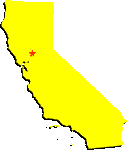
Deer have more to fear than CWD as Asian louse strike California herds
By Bob Meinecke
“It seems while most of the country has been worried by chronic wasting disease, and rightly so, another threat has been invading our shores and destroying deer populations.
CWD is bad enough. This year it’s shown up in the Big Horn Basin, with a couple of cases found east of Cody by Lovell and Greybull.
Previously the only cases G&F knew about were outside Thermopolis. Are these new cases the result of a new infection or are biologists just getting better at finding the disease?
Regardless, CWD has to be accepted as a part of the statewide habitat now. Too bad it doesn’t affect wolves.
Then we’d darned sure see a concentrated nationally led research program to eliminate it.
Anyway, a deer’s life is filled with hazards from birth to death, as such is the manner of all species, even ours.
But even though the regular causes of mortality in our deer and elk herds in addition to CWD isn’t hazard enough, now the poor animals have another enemy to guard against. Another one they have no defense against.
I’ve often said it isn’t the big things in life you need to fear because you can usually see them coming. But the little threats, while small, are still quite deadly.
Some bacteria, viruses and other sub-microscopic pathogens can eliminate a major life form in mere hours.
Others, parasites so tiny you need a magnifying glass to see them, can cause physical complications that can have life threatening affects.
The coastal Blacktail deer populations in California, Oregon and Washington are suffering from such a life threatening complication.
At one time it was surmised the Blacktail deer, which is primarily a West Coast dweller, resembling a smaller version of the mule deer, was a hybrid resulting from the crossing of whitetail bucks and mule deer does in an isolated population eons ago.
But with the advent of DNA patterning and tracking, we know the reverse is true. Our mule deer are an evolutionary descendant resulting from the inter-species coupling of the blacktail and the whitetail deer. Ain’t science wonderful?
But I digress. Out on the West Coast, these deer are being infested by a type of deer louse that is killing them.
It is believed that the louse is from southern Asia and gained access to our shore by hitching rides on Fallow deer and other exotics headed for game farms.
Asian deer, like Fallow and Sitka deer have evolved a defense to the lice through the centuries, but our deer haven’t.
The louse’s active life cycle apparently begins as colder weather moves in and they begin to breed and lay eggs under the deer’s skin.
The laying and hatching causes so much discomfort to the host deer it rubs its hair off trying to get relief. Severely infected deer look more like a coyote with a bad case of mange than deer.
Then, when really cold weather hits, the hairless deer die from exposure. They have no natural defense against this louse.
Thousands of coastal blacktails have died from the lice problem during the last decade.
Presently the infestation is confined to the coast, and seemingly to altitudes lower than 1,500 feet. But authorities are concerned the louse might adapt to higher elevations and work its way from the coastal mountain ranges and eventually into the Great Plains. Then it’s anybody’s bet what will happen.
And we thought these were the good old days.”
Here is an update on the Colorado Gunnison herd: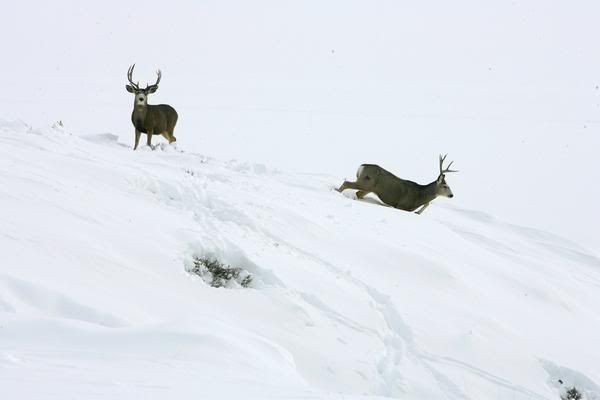
The Colorado Governor is apparently allocating $1.5m for emergency feeding. The DOW has about $400k and is accepting donations. The DOW has recruited 250 volunteers, and hopes to feed 8,000 of the estimated 21,000 mule deer in the area. Helecopter flights are set to identify mule deer locations. Roads around the area have been closed by the BLM. Snow machines have packed down snow tracks so snowmobilers can access feeding areas. Mule Deer in other areas of the state are being monitored, but do not appear to need help at this time. Some deer herds in Wyoming are also in dire condition, but I am unaware of any plans to feed them.
DOW photos
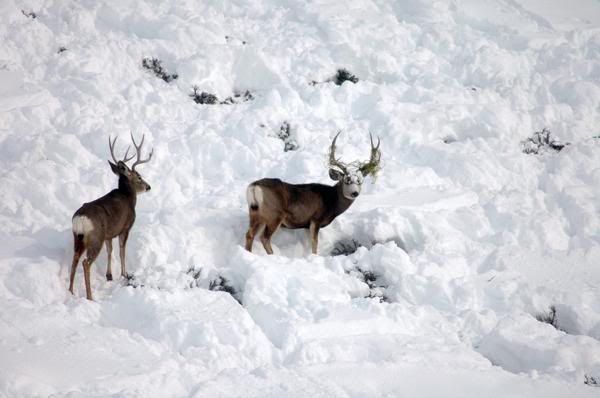
Quote from DOW rep Elderkin:
Deer in Gunnison are being fed “a specially formulated high-energy wafer developed by DOW scientists during the 1980s,” the DOW said.
The DOW estimates there are about 11,000 mule deer in the northern part of Garfield County, north of the Colorado River. In the Roaring Fork Valley from Glenwood Springs to Aspen, the DOW estimates there are about 16,500 mule deer. Another population south of Glenwood Canyon is estimated at 6,000.
Snow covering up big game animal’s food may not be a problem forever. Elderkin said this is the first winter in seven years that any amount of snow cover has lasted more than a few days.
“I’m sure it has something to do with global warming, but I don’t know,” he said. “As far as what I can see around here, I don’t think there’s any argument about global warming.

Must have a license to apply for a point
Basic hunting or combination licenses are required for additional permits.
Some hunting changes went into effect in Utah this year. One of those changes requires you to buy a hunting license or a combination license before you can apply for a hunting permit.
In addition to accepting applications for big game permits, the Division of Wildlife Resources is also accepting applications for bonus points and preference points.
But just like big game permits, you must have a valid Utah hunting or combination license before you can apply for a point.
“This change is important to the future of the state’s wildlife,” says Jim Karpowitz, director of the DWR. “As costs continue to rise, the requirement that hunters buy a license before they apply will provide us the revenue we need to continue managing big game and other wildlife into the future.”
Karpowitz has some advice for you as you decide which license to buy: the hunting license, which costs $26 for residents, or the combination license, which costs $30. “I’d encourage you to buy the combination license,” he says. “It costs $4 more than a hunting license, but it also allows you to fish.”
Hunting and combination licenses are available at wildlife.utah.gov. You can also obtain one from DWR offices and more than 350 hunting license agents across Utah.
Apply for a point by Feb. 29
Bonus points and preference points give hunters who won’t be hunting this year a better chance at obtaining a permit next year.
Applications for a bonus point or a preference point will be accepted until Feb. 29. You can apply for a point through the Internet (wildlife.utah.gov) until 11 p.m. on Feb. 29.
You can also apply over the phone at (801) 538-4700. Phone-in applications for a point must be received no later than 5 p.m. on Feb. 29.
For more information, call the Utah Wildlife Administrative Services office at 1-800-221-0659, the nearest Division of Wildlife Resources office or the DWR’s Salt Lake City office at (801) 538-4700.
————————————-
Why the change?
This change was made to raise more revenue by spreading the cost of wildlife management out more equally among everyone. Here’s one example of why the extra funding is needed:
Costs for habitat projects, surveys and management, and law enforcement have grown considerably over the past few years. On Utah’s limited entry units, the cost to manage the unit is usually higher than the amount of money brought in through the few permits that are sold for the unit and all of the application fees collected for the unit.
Because only a few permits are offered for these units, simply raising the cost for the permits would still not provide the funding needed to manage these units effectively. The DWR had to find new ways to generate funding to continue offering quality hunting in Utah.
In the past, paying $5 to try and draw a big game permit was the only financial contribution many people made to Utah’s wildlife. Now everyone must buy a hunting or combination license before they can apply for or obtain a hunting permit. The DWR believes this is a fair way to spread the cost of wildlife management out among all sportsmen.
In addition to allowing you to apply for a permit, a hunting license allows you to hunt small game in Utah. And a combination license allows you to hunt small game and fish. If you’re a nonresident big game hunter, the DWR realizes your primary focus is on larger animals, but we encourage you to try Utah’s excellent small game hunts and blue-ribbon fisheries as you travel the state this year.
Which license should I buy?
There’s only a slight difference between the cost of a hunting license, which allows you to hunt small game, and a combination license, which allows you to hunt small game and fish.
Residents can buy a hunting license for $26; a combination license costs $30.
Nonresidents can buy a hunting license for $65; a combination license costs $80.
How will the DWR use the new funding?
The following are some of the ways the new funding will benefit sportsmen and wildlife:
Other benefits
If you have comments or questions, please send them to DWRcomment@utah.gov.